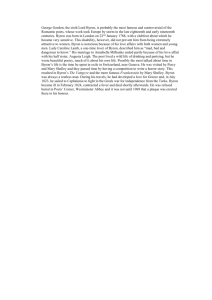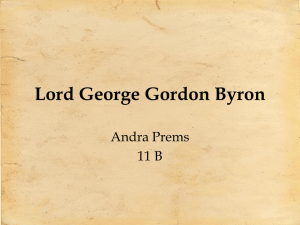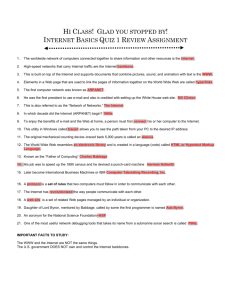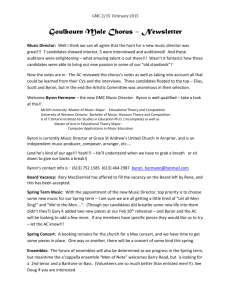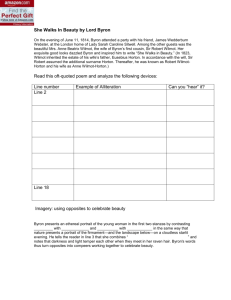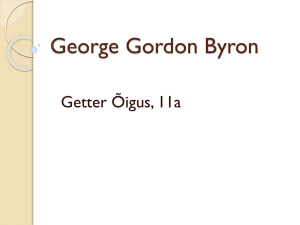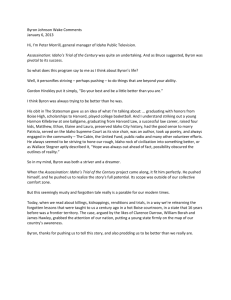George Gordon, Lord Byron: 1788-1824
advertisement
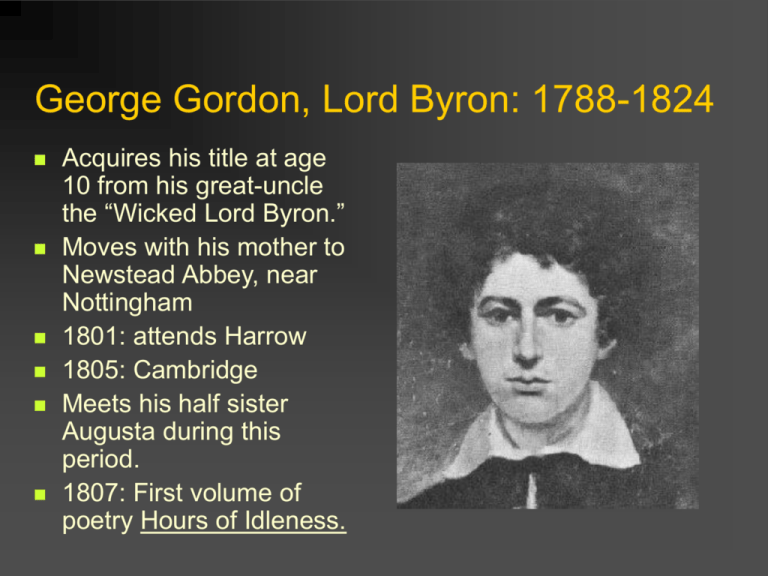
George Gordon, Lord Byron: 1788-1824 Acquires his title at age 10 from his great-uncle the “Wicked Lord Byron.” Moves with his mother to Newstead Abbey, near Nottingham 1801: attends Harrow 1805: Cambridge Meets his half sister Augusta during this period. 1807: First volume of poetry Hours of Idleness. Byron: 1807-1815 1807: Byron departs on his grand tour—to Lisbon, Spain, Greece and Albania. Begins work on Childe Harold’s Pilgrimage. 1810: Visits Turkey. 1811: At 24, Byron returns to London. 1812: The first two cantos of Childe Harold’s Pilgrimage published. 1814: The Corsair 1815: Hebrew Melodies The “mad-bad- and dangerous” Lord Byron Liaisons with Lady Caroline Lamb; Lady Oxford. Scandal and gossip about his relationship with Augusta, whose child is named Medora (heroine of The Corsair). 1815: Marries Annabella Milbanke. Annabella leaves a few weeks after the birth of Augusta Ada Byron: 1816-1819 1816: Byron settles in Geneva, near Percy and Mary Shelley, and Claire Clairmont. 1817: begins work on Manfred. Leaves for Venice. Continues work on the third and fourth cantos of Childe Harold. Sells Newstead Abbey for £ 94,500 1819: First two cantos of Don Juan. Byron: 1819-1824 1819: Meets Countess Teresa Guiccioli and her Carbonari family. 1821: Publishes another mystery play, Cain. Robert Southey follows with his comment on “the Satanic School.” Byron publishes The Vision of Judgment a rebuttal to Southey. 1823: Joins the Greek war of independence. Falls ill in 1824 and dies in April at the age of 36. The Byronic Hero Goethe’s Faust Part one is published in 1808. In Geneva, Byron meets M.G. Lewis author of The Monk who translates Faust. Part Two of Goethe’s Faust is published posthumously in 1832. The figure of Goethe’s Euphorion is based on Byron. Goethe: “Byron is not antique and is not romantic, but he is the present day itself. Such a one I had to have. Moreover, he was just my man on account of his unsatisfied nature and of his warlike bent, which led him to his doom at Missolonghi.” Lady Caroline Lamb Lady Augusta Leigh Annabella Milbanke Augusta Ada Byron (remembered as the first computer programmer.) Countess Teresa Guccioli
